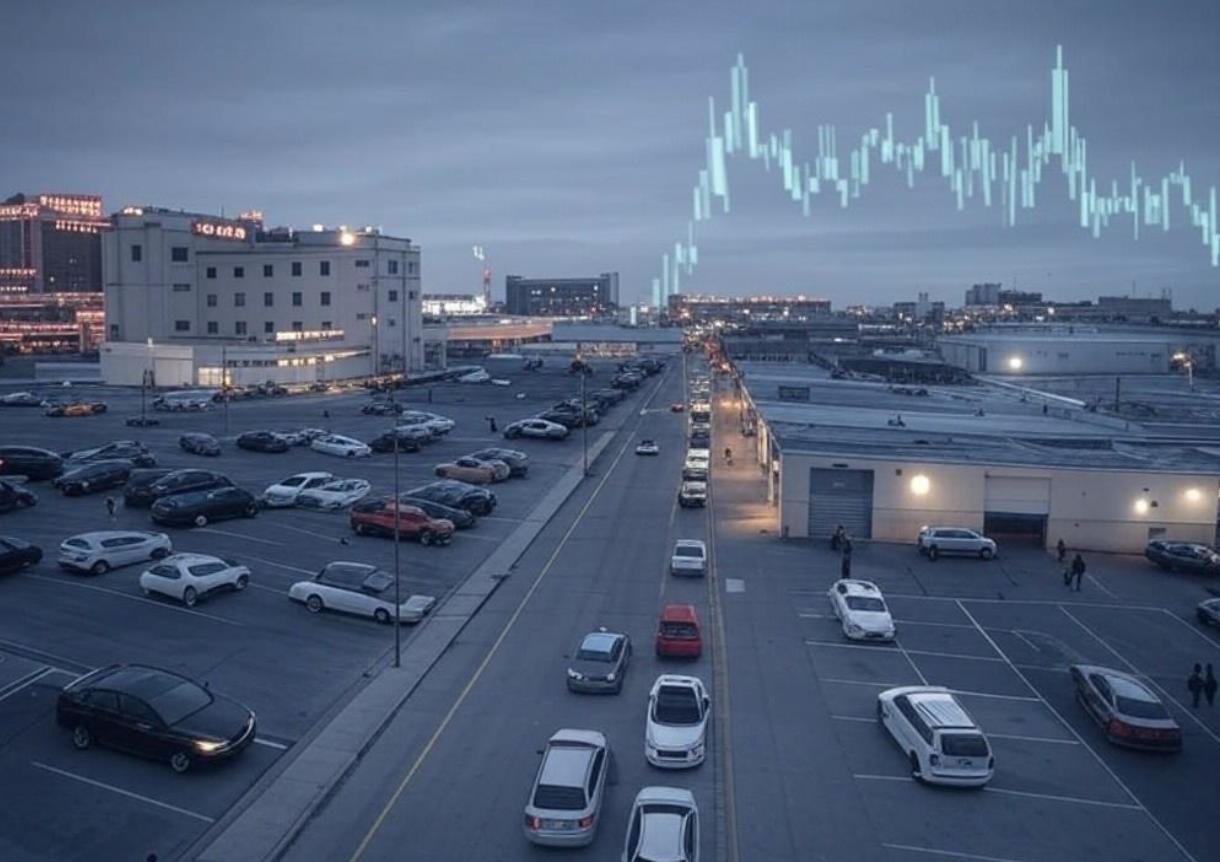
Economic indicators are sounding the alarm: the recession has stealthily begun, and the evidence is mounting. Manufacturing jobs are disappearing at an alarming rate, auto loan delinquencies are soaring to levels not seen in over a decade, and the stock market’s health is narrower than ever, all while yield curve inversions signal tough times ahead.
Consider the manufacturing sector, where employment has declined by 11,000 jobs in December alone, part of a troubling trend where jobs have decreased in seven out of the last eight months. ADP’s data confirms a cumulative loss of over 60,000 manufacturing jobs during this period, reflecting a sector in distress.
The auto market, a key indicator of consumer health, is showing signs of distress. Transitioning into serious delinquencies (90+ days) on auto loans has hit 2.9%, the highest in 15 years, with early delinquencies jumping to 8.1%, a rate not seen since the fourth quarter of 2010. This reflects a broader trend where American consumers are struggling with debt, a clear sign of economic strain.
The stock market’s performance is another red flag. An all-time low in the percentage of stocks outperforming the S&P500 illustrates a worrying concentration of market gains in few stocks, highlighting a lack of broad market health. This situation beats even the lows of 2000, signaling potential trouble ahead.
Moreover, the gambling industry, which often sees spikes in revenue during economic booms, has reported declines for the fifth consecutive month, suggesting a cooling in consumer discretionary spending.
Perhaps the most compelling indicator comes from the bond market. The spread between the 30-year and 3-month Treasury yields, a traditional harbinger of economic downturns, has inverted, crossing into negative territory. Historical data shows that this inversion, followed by an un-inversion, has reliably preceded recessions. After the spread falls below zero and then rises above +0.8, a recession typically starts within 0 to 4 months. This pattern has been observed in previous downturns in 1990, 2001, 2007, and 2019, with a median delay of 3 months.
These indicators collectively suggest that we are already in a recession; the lag in public perception means that by the time it’s widely acknowledged, it might be too late for many to adjust. Now is the time for strategic financial planning, whether for individuals or at the policy level, to navigate through what appears to be an inevitable economic downturn.
2) The highly accurate New York Fed Recession Probability Model shows that the economy is almost guaranteed to be in a recession—particularly because it's turning down, which is what happens once the recession starts. pic.twitter.com/IxwxsaXL3N
— Jesse Colombo (@TheBubbleBubble) December 14, 2024
ButtholeCoin too: pic.twitter.com/0xsaQofPRJ
— Sold At The Top (@soldatthetop) January 9, 2025
5th month in a row gambling revenue has declined y/y
Revenge gambling continues to slow.#MacroEdge https://t.co/7Q4JNFfLte pic.twitter.com/1pxrskmTsR
— Don Johnson (@DonMiami3) January 9, 2025
Sources:
https://www.bls.gov/opub/btn/volume-9/forty-years-of-falling-manufacturing-employment.htm
https://www.visualcapitalist.com/the-decline-of-u-s-manufacturing-by-sector/
https://www.bls.gov/opub/mlr/2018/beyond-bls/the-fall-of-employment-in-the-manufacturing-sector.htm
https://ycharts.com/indicators/us_auto_loans_delinquent_by_90_days
https://fred.stlouisfed.org/categories/32440
https://www.marketinout.com/chart/market.php?breadth=advance-decline-line
https://www.currentmarketvaluation.com/models/yield-curve.php
https://fred.stlouisfed.org/series/T10Y3M
0 views